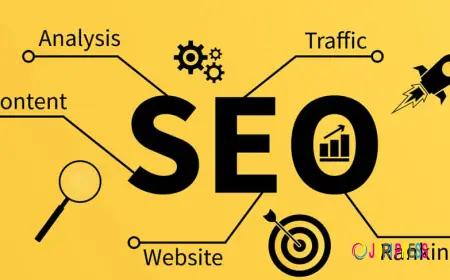Can Power Analyzer Connect with IoT? Why are Accelerometer Sensors Used in Toys?
TME Systems is a premier high-tech solutions and services provider, established in 1987 and headquartered in Singapore. We have expanded with branches and affiliate offices in the Southeast Asia region.

A power analyzer is a complex device that is applied to measure, monitor, and analyze electrical parameters, including voltage, current, power, and energy. It assists industries, laboratories, and utilities to optimize energy utilization, identify areas of inefficient operation and system performance, and aid in accurate system diagnostics and operational efficiency.
What Is IoT in Energy Systems?
The Internet of Things (IoT) is a network of connected devices that gather and transfer their information through the internet. IoT can be used in energy management where sensors, meters, and analyzers can communicate in real time and make smarter decisions, automate, and predictively analyze.
Can Power Analyzer Connect with IoT?
Yes, a power analyzer can be connected to IoT. Contemporary analyzers have a propensity to be wireless in nature, with the ability to integrate with the cloud and smart sensors. With IoT, they also offer real-time information, remoteness, proactive care, and energy efficiency. Such an integration enhances efficiency, cost reduction, and promotes advanced energy management solutions in industries.
Role of IoT in Power Monitoring
The Internet of Things is defined as a network of communication and exchange of data between devices. IoT in energy management allows the sensors, meters, and analyzers to transmit the information to a cloud platform where it can be visualised, analysed, and acted on remotely. This enables the engineers, facility managers, and operators to keep track of the performance wherever they are.
How Power Analyzers Connect with IoT
Modern power analyzers now come with built-in connectivity features like:
- Wi-Fi or Ethernet ports for direct internet connection.
- Cloud-based platforms for storing and analyzing real-time data.
- API integration for linking with smart energy management systems.
- Industrial internet applications, like wireless networks like Bluetooth, Zigbee, or LoRaWAN.
Power analyzers using these technologies will allow providing the IoT, dashboards, or mobile applications with a flow of data in real time.
Benefits of IoT-Enabled Power Analyzers
IoT Power analyzers also support real-time monitoring, remote access, and predictive maintenance. They maximize energy-saving using details, minimize the cost of operation, and reduce carbon footprints. Scalable systems will allow two or more analyzers to be linked between plants in a way that the centralised monitoring and more intelligent energy management of the two industries, as well as the business, is achievable.
Challenges to Consider
Although there are numerous advantages to integration, it has certain pitfalls:
- The establishment cost of the IoT-enabled analyzers might be high in the beginning.
- When connecting to the internet, data security and privacy should be taken care of.
- Older analyzers, when used with the new IoT platform, might face compatibility challenges.
Traditional Power Analyzers vs IoT-Enabled Analyzers
|
Feature/Aspect |
Traditional Power Analyzer |
IoT-Enabled Power Analyzer |
|
Data Access |
Manual readings on-site |
Remote access via cloud/mobile apps |
|
Monitoring |
Periodic checks only |
Continuous, real-time monitoring |
|
Integration |
Standalone device |
Connects to IoT platforms, SCADA, and cloud |
|
Maintenance |
Reactive (after a fault occurs) |
Predictive (alerts before failures) |
|
Data Storage |
Limited to local memory |
Long-term cloud storage and analytics |
|
Scalability |
Difficult to manage across sites |
Centralized view of multiple facilities |
|
Decision Making |
Based on manual analysis |
Automated insights with AI/IoT analytics |
The Future of IoT-Connected Power Analyzers
The future seems to be more integrated with artificial intelligence and machine learning. IoT-based connected analyzers will not measure and report; they will:
- Anticipate failures in systembeforeto they occur.
- Automatically control loads to minimize the peak demand charges.
- Cooperation with the renewable energy systems to match the demand and supply.
- Deliver data on energy to aid in achieving carbon neutrality.
As faster communication systems such as 5G are deployed, these systems will prove to be even more responsive and reliable.
What Is an Accelerometer Sensor?
An accelerometer sensor is a type of electronic sensor used to detect the acceleration forces. These forces may be at rest, such as the pull of gravity, which is constant, or those that are dynamic, such as movements, vibrations, and impacts.
These physical changes are converted into electrical signals by the sensor and could be interpreted by the internal system or microcontroller of the toy.
Using an example, suppose you shake a toy car, the accelerator will be able to sense this and make a sound play or a vibration happen. When a child rotates a gaming controller device, the accelerator detects the rotation and converts it to a game movement.
Types of Accelerometers
Accelerometers are available in multiple forms, including:
- Mechanical Accelerometers: These accelerometers detect movement using springs and masses. Mass depends on the motion of the device, and this leads to changes that are quantifiable and that define direction and acceleration.
- Piezoelectric Accelerometers: They produce an electric charge in the presence of acceleration forces. This charge is proportional to motion and thus vibrations, shocks, or dynamic motion can be measured accurately.
- Capacitive Accelerometers: These are capacitance sensors that are motion sensitive. The movement of internal structures alters electrical fields and converts them into acceleration and tilt data.
- MEMS Accelerometers: MEMS sensors are small, very efficient, and are also very economical. They are small enough to fit easily into electronics and toys to provide high accuracy in motion detection to play with them.
Why Accelerometer Sensor Used in Toys?
1. Motion and Activity Detection
It can follow the movement of a toy through accelerometers, whether it is shaking, bouncing, or running. This enables toys to respond to the physical activity so that play becomes more involving and the kids will be motivated to participate in the play.
2. Interactive Gameplay
Gestures and motions react directly to toys with accelerators. Tilting, waving, or shaking activate sound, lights, or movement, which make play in the world of hands-on experiences without using the traditional buttons.
3. Vibration and Impact Sensing
Vibration or sharp impacts can also be detected by accelerometers and provide realistic responses to the toys. As an example, when a ball is hit, it may light up, and when a car hits someone, it may catch fire.
4. Orientation and Tilt
These sensors detect direction and tilt, and assist toys in reacting to a change of position. A robot may control its movement on turning, or a controller may turn by merely tilting.
5. Safety Features
Accelerometers make toys safe because they do not require small buttons. Children engage functions by using natural movements such as shaking or rolling without touching small removable components.
Benefits of Accelerometer Sensors in Toys
Enhanced Interactivity
Toys respond to tilts, shakes, and movements, and they achieve real-life reactions because of accelerometer sensors. This interactive process enhances better bonds, and children feel involved as play time is prolonged.
Encourages Physical Play
Accelerated toys can be used to motivate running, tilting, or tossing to respond. This will encourage kids to be active and they will spend their screen time doing other healthy exercises instead of using it to watch TV and make it enjoyable and enjoyable.
Customization
Play style responsive toys use accelerometers. A child can shake, tilt, or touch a toy with tenderness, and the toy responds to the actions of the child, resulting in a tailored and customized play.
Improved Safety
Some sensors identify dangerous tilt, abrupt impacts, or unsmooth handling. This will assist in avoiding accidents, and thus the ride-on cars, smart toys, or interactive gadgets can be safer with kids and reassure parents.
Examples of Toys That Use Accelerometers
- Dolls and plush toys that react to being picked up.
- RC cars and drones, which change speed or stability as they move.
- Pedagogic learning toys to make the kids shake, tilt, or move them to solve the problems.
- Body tracking gaming controllers are used to play on-screen.
Conclusion
Both power analyzers and accelerator sensors demonstrate the role of modern technology in efficiency, safety, and interactivity. Accelerometers make toys interesting and interactive, and IoT-powered analyzers give them real-time energy data. Collectively, these innovations prove the advantages of smart sensors related to better performance, safety, and user experience.
What's Your Reaction?
 Like
0
Like
0
 Dislike
0
Dislike
0
 Love
0
Love
0
 Funny
0
Funny
0
 Angry
0
Angry
0
 Sad
0
Sad
0
 Wow
0
Wow
0



















































